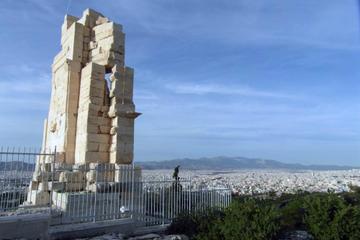Philopappou Hills
TIME : 2016/2/22 11:07:51

Philopappou Hills
The Acropolis is Athens’ most famous hill, but one that can’t escape notice (especially as you climb up to the Parthenon) is the nearby Philopappou Hill. This forested hill was once called Mouseion Hill, or “Hill of the Muses,” but has been known as Philopappou Hill since a monument of the same name was built atop the hill in the year 116 C.E. The monument and tomb, the most noticeable part of the hill when viewed from anywhere else in Athens, was for the Roman consul and senator Gaius Julius Antiochus Epiphanes Philopappos. He was a powerful and respected man in Athens, having lived there for many years, and was a prominent theater sponsor. The monument is a partial ruin today, but you can still see aspects of Philopappos’ life carved into the stone.
Lower on Philopappou Hill, you can also visit what some say is the cell where Socrates was imprisoned in 399 C.E. before he was executed. Many others contend the cell was in the Ancient Agora, but that doesn’t stop city officials from labeling the caves on this hill as “Socrates’ Prison.”
Practical Info
Access to Philopappou Hill is free, and there’s no admission fee to see the monument or the caves called Socrates’ Prison.
